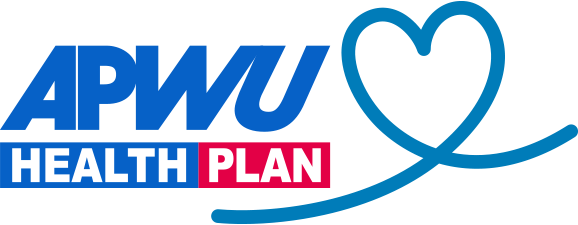Screening mammograms use low-dose X-rays to find breast cancer early, before it causes any warning signs. These tests are important for women because treatment is more likely to be successful the sooner breast cancer is detected. The chances of survival are higher, too. While national health organizations offer different breast cancer screening guidelines, everyone agrees that women should discuss the benefits and risks of mammograms with their doctors and decide together when to begin screenings and how often to repeat them.
What is breast cancer?
Breast cancer occurs when cells in the breast divide and grow out of control. Over time, the cells form a tumor that can be seen on a mammogram.
Apart from skin cancer, breast cancer is the most common type of cancer in women in the United States. In fact, about one in eight U.S. women will develop invasive breast cancer at some point in life.
Types of breast cancer
There are many different types of breast cancer. Invasive breast cancer means that the cancer has spread—or metastasized—to nearby tissue, lymph nodes, or other parts of the body. Non-invasive breast cancer means that the cancer hasn’t spread.
Breasts are made up of three main parts:
- Lobules, the glands that produce milk
- Ducts, the tubes that carry milk to the nipple
- Connective tissue
Most breast cancers begin in the ducts or lobules.
Types of breast cancer include:
Invasive ductal carcinoma (IDC). As the most common type of breast cancer, IDC accounts for about 80 percent of all breast cancers. With this type of the disease, cancer cells grow outside the ducts into other parts of the breast. (Carcinoma is a common form of cancer.)
Invasive lobular carcinoma (ILC). With ILC, cancer cells spread from the lobules to nearby breast tissues. About 10 percent of all invasive breast cancers are ILCs.
Ductal carcinoma in situ (DCIS). With DCIS, abnormal cells grow inside the lining of the ducts but have not spread to nearby breast tissue. DCIS is a non-invasive breast cancer because it hasn’t spread beyond the ducts.
Risk factors for breast cancer
The biggest breast cancer risk factors are gender and age. Woman have a far greater risk of developing breast cancer than men. And women are more likely to develop breast cancer as they grow older.
For women, the risk of breast cancer rises if your mother, sister, or daughter has breast cancer. However, about 85 percent of breast cancers occur in women who have no family history of the disease.
A small percentage of breast cancers can be linked to inherited mutations in the breast cancer genes, BRCA1 and BRCA2. On average, women with a BRCA1 mutation have up to a 65 percent risk of developing breast cancer before age 70. For women with a BRCA2 mutation, the risk is 45 percent.
Early symptoms of breast cancer
Becoming familiar with your breasts can help you identify abnormalities or changes over time. However, the warning signs of breast cancer are not the same for all women. The most common signs include:
- A change in the look or feel of the breast
- A change in the look or feel of the nipple
- Nipple discharge
Most lumps are not breast cancer. But be sure to talk to your doctor if you find a lump in your breast, have any warning signs, or notice changes in your breasts or underarm area.
What is a mammogram?
A mammogram is an X-ray image of your breasts. During the procedure, your breasts are compressed between two surfaces to spread out the tissue. Your doctor examines the images to look for signs of cancer.
Mammography is a common procedure. In fact, according to the most recent data available, 64 percent of women in the U.S. had a mammogram within the past two years.
There are two types of mammograms, screening mammograms and diagnostic mammograms.
Screening mammograms are used to detect breast changes in women who have no signs of cancer or breast abnormalities.
Diagnostic mammograms are used to examine breast changes, lumps, pain, skin changes, or nipple discharge. They’re also used to evaluate abnormal findings on a screening mammogram.
Screening guidelines for breast cancer
Breast cancer screening guidelines vary by health organization. The U.S. Preventive Services Task Force mammogram guidelines recommend women begin screening at age 50. The American Cancer Society mammogram guidelines recommend women begin screening at age 45. However, both organizations recognize that starting breast cancer screenings earlier may make sense for some women.
For example, if you have a family history of breast cancer, you may need to begin screenings earlier and have them more often. Only you and your health care provider can decide what’s right for you.
Risks of mammograms
Mammography is an effective tool that can find breast cancer early and help save lives. However, it’s important to discuss the risks and limitations of mammograms with your doctor.
Mammograms can be wrong. A potential downside of mammograms are false-positive results, when the test shows signs of cancer even though there is no cancer in the breast. The accuracy of the procedure depends on a woman’s age and breast density, the technique used, the experience of the radiologist, and other factors.
Mammograms involve radiation exposure. In most cases, the benefits of breast cancer screenings offset the risks posed by exposure to very low doses of radiation.
Results can be hard to interpret. The dense breast tissue common in younger women can hide signs of cancer. It’s often easier to detect changes in breast tissue and interpret mammograms as women age.
Additional testing may be required. If your radiologist finds something abnormal on your mammogram, you may need another test. This could involve an ultrasound or a breast biopsy, where a sample of breast tissue is removed for testing in a lab. A small percentage of mammograms require more testing, but most abnormal findings don’t turn out to be cancer.
Some cancers can’t be detected. While mammograms find most breast cancers, they can miss cancers that are too small or hidden in areas that are hard to view.
Talk to your doctor
If you’re not sure when to start breast cancer screening or how often to repeat it, talk to your doctor. Together, you can decide what’s best for you based on your personal risk of breast cancer and your medical history.







